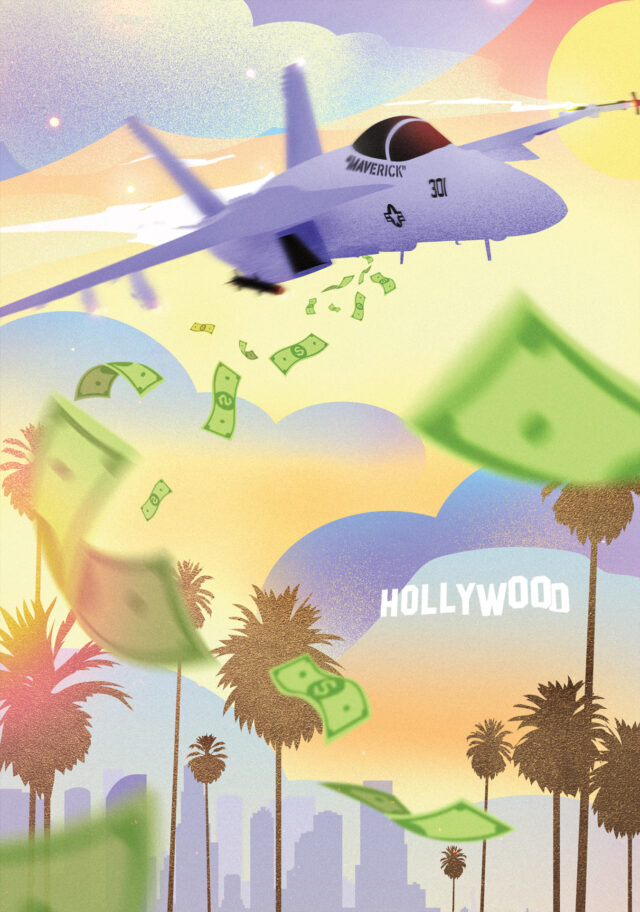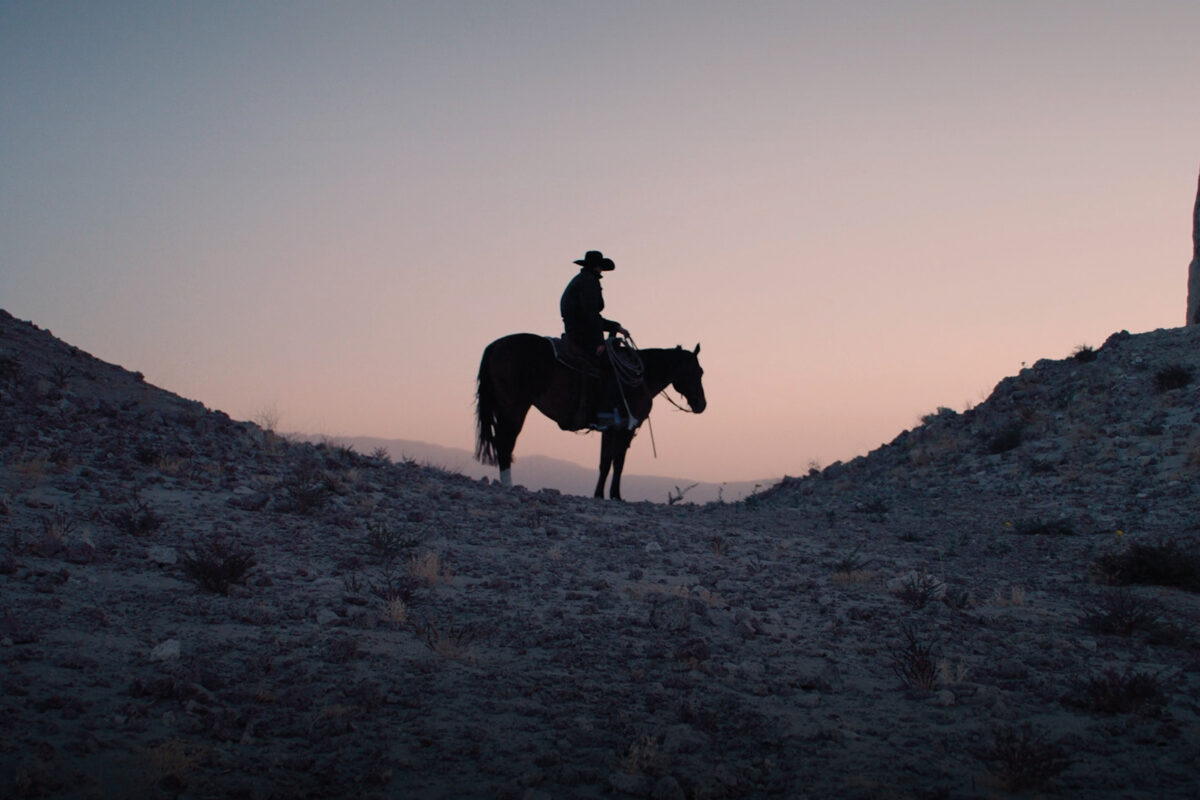With the streaming platforms tightening their belts, have the Top Gun and Avatar sequels saved the theaters?
Words by STEVE SANDERS
Illustration by ADOLFO CORREA
Amid a throng of Hollywood glitterati at last month’s Oscar nominees luncheon, Steven Spielberg tracked down Tom Cruise and clapped him on the shoulders. “You saved Hollywood’s ass,” he told the Top Gun star. “And you might have saved theatrical distribution. Seriously.”
Top Gun: Maverick, the sequel to Cruise’s 1986 hit, grossed $1.5 billion in global box office sales last year, making it just the third film to top the $1 billion threshold since the pandemic. Avatar: Way of Water also shot the lights out with a $2.3 billion box office take.
For the film industry, Cruise’s blockbuster offered a glimmer of hope after three of the worst years in its history. Hollywood, you see, has tipped into its very own recession. Studios are slashing budgets, killing films, laying off workers, and “unrenewing” series that had already gone into production or finished. A writers’ strike looms if a new deal is not reached by May 1, when the current three-year agreement lapses. A stoppage, and a consequent drought of new films and television series, looks likely: Writers are demanding higher wages and residuals just as studios have gone into cost-cutting mode.
Amid the gloom, Cruise, who held his film for two years during the pandemic so it could be released in theaters, appears to have reopened a path to the old way of doing things: pumping money into big marketing pushes to generate long and lucrative theatrical runs.
Hollywood studios appeared to have given up on that model. Driven by competition with Netflix, they dove headlong into the streaming wars, pumping out countless films that skipped the cinema and went straight to people’s homes. There is a growing consensus that the “straight-to-streaming” bonanza was a mistake. Imax chief Rich Gelfond recently told the Financial Times: “Just about every studio and every streamer has indicated that they’re going to send all of their movies to the theaters first, and then to a streaming service. The fact is that a theatrical run improves the streaming run.”
Studios are set to release a deluge of films this year that will have only-in-theater runs before they are shoveled into the maw of the streaming beast. It is already happening. Cocaine Bear, the unapologetically schlocky horror-comedy about a drugged-out bear in the Georgian wilderness, brought in a healthy $65 million in the two-week theatrical window before the studio made it available for purchase or rental at home. Horror film M3GAN grossed $175 million in 47 days in theaters before it was made available on streaming.
It’s clear that Hollywood is desperate because the streaming model is far worse than what came before. The river of content required to keep carousels full and subscribers paying requires vastly more investment, and the returns are far slimmer. For most studios streaming has been, simply put, terrible business. Unfortunately for Hollywood, it is also the way most viewers, especially young people, want to watch.
The landscape Hollywood hopes to reinvigorate has changed dramatically—or, more to the point, has shrunk
Disney lost $2.6 billion on its streaming operation during the last six months of 2022. Chief executive Bob Iger, who came out of retirement last year to right the ship, has fired 7,000 people and pledged to slash billions from its content budget. David Zaslav, head of Warner Bros Discovery, called the great streaming experiment “deeply flawed.” Comcast’s streaming arm, Peacock, lost $4.2 billion over the past two years—an eye-watering $180 million each month.
All these losses explain why the industry is lunging at the green slots emerging in cinema-going—and not just for the superhero franchises and star-driven vehicles like Top Gun. Everything Everywhere All at Once, winner of the Academy Award for Best Picture, earned a healthy $100 million in global box office sales.
Yet the cinema landscape Hollywood hopes to reinvigorate has changed dramatically—or, more to the point, has shrunk. Since the pandemic, more than 3,000 screens have shut down, a near 8 percent drop, leaving roughly 40,000, according to Comscore. Giants like AMC Theatres are testing tiered seat pricing and upgrading cinemas in hopes of luring back a public that got used to sitting on the couch.
Brian Wieser of media consultancy Madison and Wall says theatrical releases, at best, are destined to become a niche business, a leg to hold up the streaming stool. The average release window of 90 days, for example, has halved as studios scramble to generate buzz in theaters before quickly making films available online. Cocaine Bear’s window was just two weeks. “What did Cuba Gooding Jr. say in Jerry Maguire?” he asks. “Show me the money.” He adds, “Streaming is how people want to consume content. Yes, it is a worse business than the one which came before it, but failing to invest is an even worse decision. Would you like a bad outcome or a worse one? That’s the question you have to ask if you’re the studios. They are not going back to the 30, 40, 50 percent profit margin of the 2010s.”
Before the pandemic, U.S. box office sales hit $10 billion, Wieser says, which is a fraction of the $30 billion that the streamers bring in. So even if the movie business comes roaring back and grows by, say, 50 percent, the streaming business could double or triple because even though the likes of Warner and Disney are currently slashing and burning, overall the industry is still ploughing unthinkably large sums into new shows and films for at-home consumption.
Amazon and Apple together are expected to spend more than $25 billion on content this year alone, and neither has any great love or attachment to the legacy business they are undercutting.
The cinema experience isn’t dead. The past year showed that. But it’s not, nor will it ever be, what it used to be.
This story originally appeared in the Men’s Spring 2023 issue of C Magazine.
Discover more STYLE news.
See the story in our digital edition




